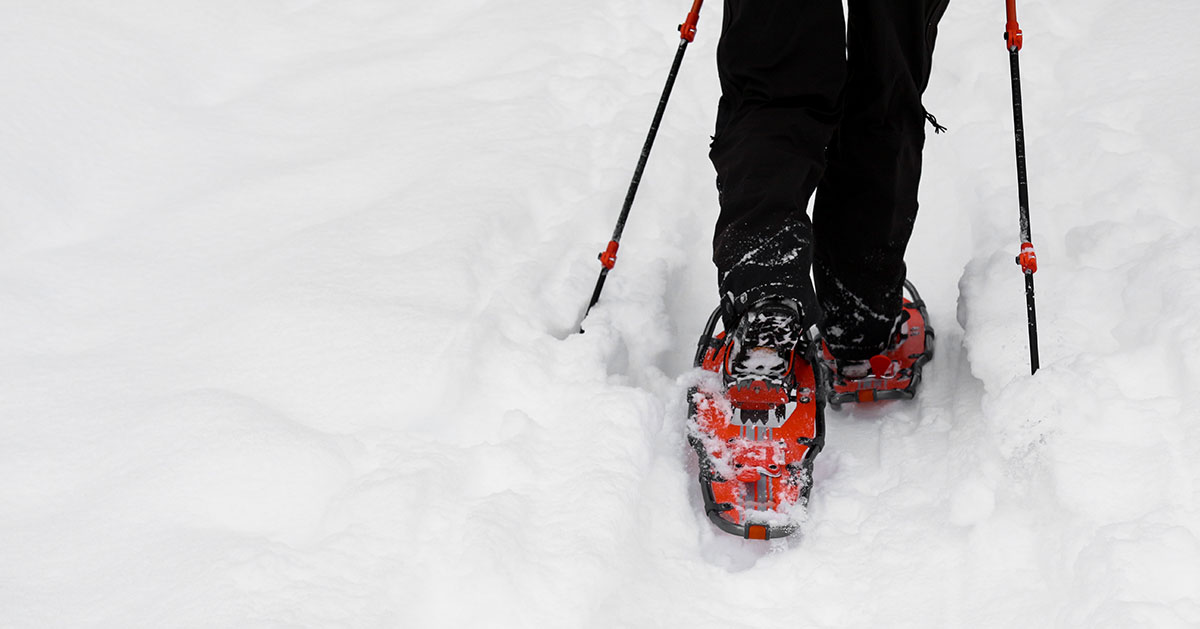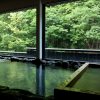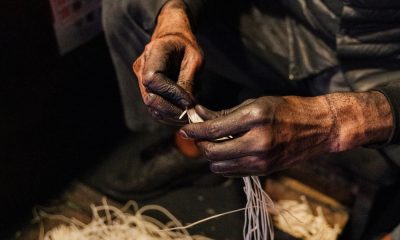Feature
Shuffle through Powder Heaven
Traverse Japan’s winter landscapes on a pair of snowshoes.
Wintry Japan is world-famous for its snowcapped mountains and reliable powdery snowfalls. One of the best ways to make the most of the sleek white winter landscapes is with the increasingly popular activity of snowshoe hiking.
Snowshoe hiking, or snowshoeing, is relatively easy and is suitable for healthy people of all ages and ability levels who want to explore Japan’s prime ski and snowboard destinations. It isn’t as adrenaline-focused or skills-intensive as snowboarding, nor is it as strenuous and as a day of cross-country skiing. Like regular hiking, it is about freely exploring at a pace that suits the individual and gaining access to scenery that is only brought to life in the winter.
Nagano
Nagano Prefecture is well-known as one of Japan’s top skiing and snowboarding destinations. Hosting the 1998 Winter Olympics elevated the international reputation of this winter sports haven. With a well-developed winter tourism sector, there is a good range of hotel and restaurant options in the charming towns that surround the various ski hills.
There are endless snowshoeing options in this area if you are experienced with your own snowshoes and safety gear. There are also several exciting options for snowboarders wanting to combine snowshoe hiking and snowboarding. If you are a beginner in backcountry winter snow touring, then an organized guided tour would be a good idea initially.
The Shiga Kogen ski area is perhaps the most popular destination for those looking for an unforgettable snow holiday in Nagano. There are various organized tours provided by companies such as Shiga Kogen Guide, the Shiga Kogen Nature Conservation Center, and Nagano Ventures, to name a few.
The Shiga Kogen Nature Conservation Center website lists various snowshoe trail and tour options and offers tours from January 11th to March 29th with peak season being in February. Their tours are priced from ¥4,000 to ¥8,000 per person for a one-day tour. They also offer private guides at reasonable rates. If you have a bit more confidence and want to venture out on your own, many ski resorts and hotels will rent snowshoes to guests. Mt. Yakebitai is an excellent place to find your own trails and snowshoe options.
Nagano’s Norikura Highlands also offers an excellent snowshoe trail system that even includes frozen waterfalls. A popular destination for avid trekkers is the Zengoro Falls. Little Peaks snow equipment rental shop located near the Norikura Visitor Center rents snowshoes and poles to visitors for a few thousand yen. The visitor center is an excellent place to find trekking maps and local food and hotel information. Little Peaks also leads guided snowshoe tours with lunch and equipment included. Guesthouse Raicho is well set up for all your snowshoe adventure needs. Conveniently located about 30 minutes from the Zengoro waterfalls, guesthouse staff will also lead guided night visits to the falls.
For backcountry ski and snowshoe/snowboard touring, a good jumping-off point for experienced visitors is the backcountry gate at Happo-One ski resort in the Hakuba ski area. You can test your avalanche safety beacon there and also meet experienced locals who can give you more inside information. There are avalanche risks here, so a proper safety kit is essential—probes, beacons, shovels, and inflatable avalanche bags are highly encouraged. Skins for your skis or snowshoes for backcountry borders will assist you in the initial climb and places you’d otherwise have to hike.
If Nagano is on your winter itinerary, you would be well served to enjoy the local hot spring culture and soak up the splendid snow and wintery scenes from the comforts of a soothing bath. The highlight is the Jigokudani Onsen, home to the world-famous bathing snow monkeys. If you’re adventurous, there is a way to bathe in an onsen with these monkeys running about, and occasionally climbing into the bath with you. About 250 meters away from the main bath (the monkeys-only touristy photo spot), there is also a private guesthouse and bath that allows onsen access for a few hundred yen per person, and around ¥12,000 for a night’s accommodation. Periodically, some of the monkeys will even climb in these baths with visitors.
Kansai
If you’re sticking around the Kansai region for winter, there are also some great snowshoeing options available here. Two of the best are in Shiga and Hyogo prefectures.
The mountains between Kyoto and Lake Biwa are known as the Hira mountains and they offer some of the best snowshoe touring available in Kansai. Tour companies you can book with include Friendship Adventures in Shiga, who offer half-day, full-day, and family tours, and the Kannabe Nature School in Hyogo. Hyogo tours are expected to start December 20th and run through March 20th and reservations can be made online.
Kannabe has various winter snow activities, which families and groups can enjoy. In addition to snowshoe touring, there are well-established ski and snowboard runs and children’s snow parks as well as restaurants and hotels. The Kannabe ski and snow area is just 45 minutes away from the village of Kinosaki Onsen, where guests can enjoy the seven public baths.
For the more experienced Kansai snowshoers, two great Shiga options include Mt. Bunagatake in Otsu, featuring a well-established 13 km trail, and Mt. Ibuki at the north of Lake Biwa. Shiga’s biggest mountain, Ibuki has the benefit of wide-open views, so route-finding will not be a challenge on clear days. Expect winter temperatures to average about -5°C to -10°C on Mt. Ibuki in January and February. The most popular climbing route is from a trailhead at Ibuki-Tozanguchi bus stop which is accessible from Omi-Nagoaka Station located on the Tokaido main train line.
Safety
Snowshoeing, like other winter mountain sports, has its risks. If you are not yet experienced with the activity, use a guide service to ensure your safety. If you are experienced enough to adventure on your own, consider that Japanese mountain signage is often in Japanese only, so be sure to carry your own navigation equipment (either a map and compass or GPS devices). Also, be sure to carry enough warm clothing to keep you comfortable in sub-zero temperatures. Bring plenty of food, water, and safety gear, including winter safety blankets, a whistle, and a fire source. Wind, snow cover, temperature, and alternative routes should be checked and planned for in advance.
















